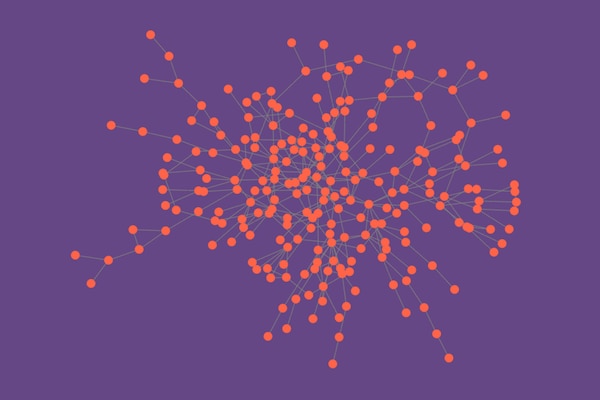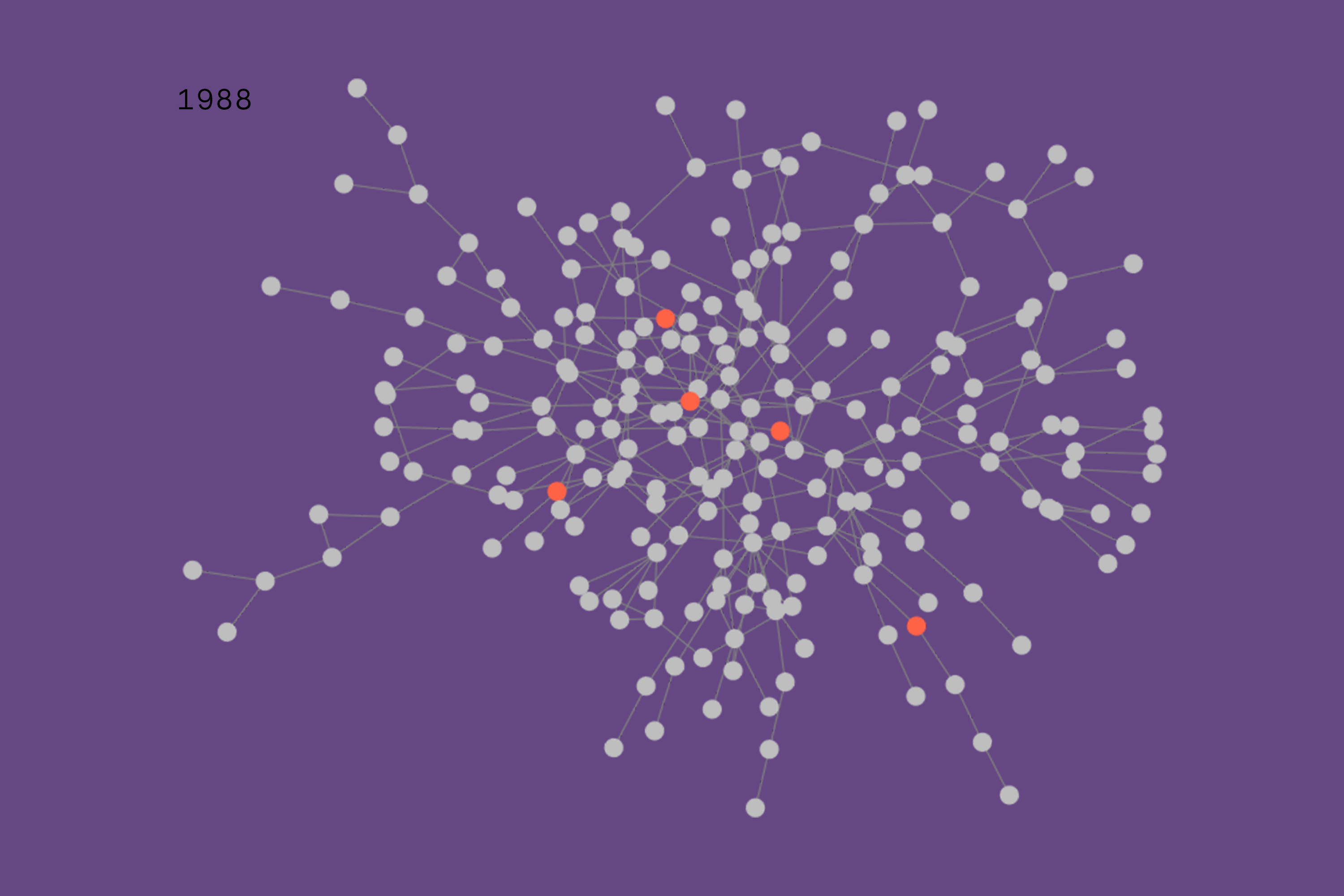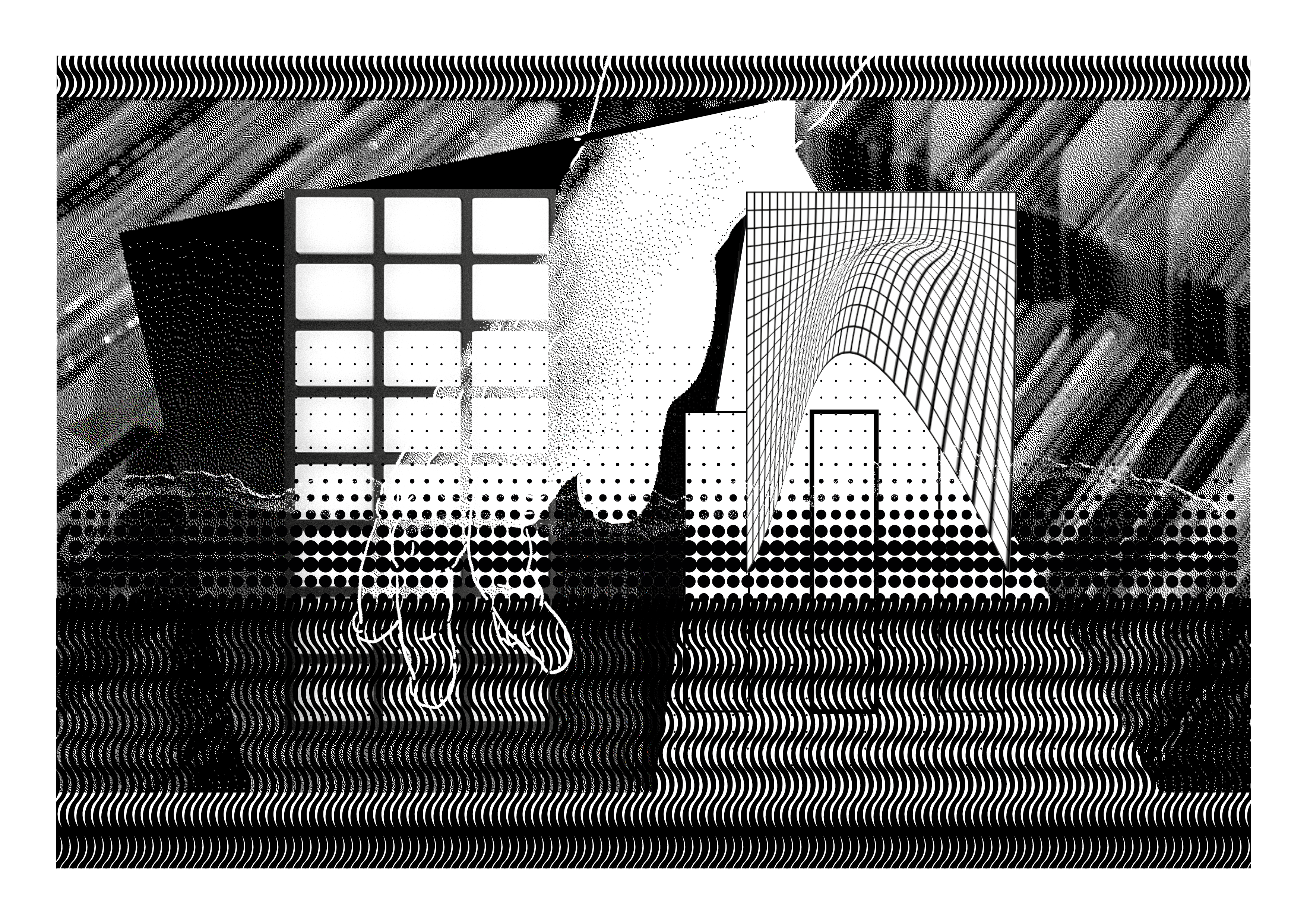A Study of Collaborative Sampling Across International Networks

From Los Angeles to New York City and London to Accra, samples have served as mechanisms of cultural exchange and evolution
Cultural change is ubiquitous in music: genres mature and diverge into subgenres, while innovative sounds emerge and gain traction. And as in other shifting cultural systems, like fashion and language, these large-scale changes are driven by interactions between individuals. Listeners share music with other listeners, producers collaborate with other producers, and information, sonic or otherwise, is shared along the way. This process of cultural transmission is akin to a game of telephone, where small modifications during each interaction result in significant changes over time.
Some scholars of electronic music and hip-hop have suggested that music samples may be passed between artists in this way. For example, the Amen break, a famous drum break from the 1969 song “Amen, Brother” by the Winstons, was first sampled by hip-hop producers in the mid-’80s, and has since been used more than 3,000 times in drum & bass, jungle, mainstream pop and other genres. Although some artists may have discovered the Amen break independently, it’s likely that the rapid spread of the Amen break was due, at least in part, to artists sharing it with collaborators and other members of their music production communities.
Samples are culturally transmitted through music production communities similar to the way that fashion trends and new words pass through populations.
In the early days of sampling, the majority of artists primarily collaborated with people nearby. Samples had to be physically shared on vinyl records or tape, and access to hardware samplers was limited. Today, social media allows artists from all over the world to share music and collaborate with one another, and digital files and production software have made sampling much more accessible. With fewer limitations and higher connectivity, artists may be less dependent on the information and resources shared by their collaborators.
In a recent study published in the scientific journal PLOS ONE, we used data from Discogs and WhoSampled to investigate whether and how music samples are culturally transmitted (i.e. shared via interaction), and if the internet has affected this process. First, we reconstructed a collaboration network of music producers and tracked the appearance of music samples over time. This involved extracting collaborative releases from Discogs to see who has worked with who, and then using WhoSampled to determine when each artist used a particular sample for the first time.
Specifically, we focused on three of the most heavily sampled drum breaks of all time: “Amen, Brother,” “Think (About It)” by Lyn Collins and “Funky Drummer” by James Brown. Second, we used geographic data to determine the effects of the internet on community structure. In short, we found that if an artist collaborates with another artist who has used a particular sample in the past, then they are more likely to use that sample in the future. Scaled up, this means that samples are culturally transmitted through music production communities similar to the way that fashion trends and new words pass through populations. We were also surprised to find evidence that, although the internet has delocalized communities and allows artists to discover samples on their own, their sample usage is still primarily influenced by their collaborators. In other words, artists continue to depend on their on- or offline communities for information in the digital age.

The fact that collaborators share information with one another should come as no surprise – artists often report that their long-term collaborators influence their production process. Kush Jones and Swisha, members of the artist collective Juke Bounce Werk, initially met on Soundcloud around 2013, when they were living in the Bronx and Los Angeles, respectively. After a year or two of interacting online, they finally met in person and became close friends and frequent collaborators. Like many other artistic duos, their collaborative relationship has had a profound influence on how they work. “We definitely learn from each other and apply it to our production workflow,” writes Swisha, who has since relocated to New York City. “It’s honestly something I can’t even pinpoint and form into words because it’s so constant.” Beyond their workflow, Swisha points out that his and Kush’s influence on each others’ personal sounds primarily occurs outside of the studio. “It’s more from our similar taste in music, DJing and hanging out together.”
Other artists report that collaboration itself influences both their production process and personal sound. Mina is a producer from the UK whose debut album, released on her label Earth Kicks, features thirteen artists from three continents. “I’ve been collaborating from the beginning of my career so it’s influenced my sound a lot,” she writes. “I’m strongly influenced by sounds from Africa so it makes sense for me to work with people who are part of that culture.”

One of Mina’s long-time collaborators, Bryte, is a Ghanaian vocalist who she discovered online and eventually met through a mutual friend. Mina and Bryte have become known for their infectious blend of azonto and UK funky, best represented on tracks like “Sentah” and “Make Money.” “Working with Bryte has been particularly impactful for me as the tracks we make you can really hear the blend of UK and Ghanaian sounds... it’s taught me a lot about songwriting and vocal engineering.” These kinds of close collaborative relationships may modify an artist’s sound or approach to production in ways that are passed onto future collaborators. For researchers, this means that the cultural transmission process is not limited to music samples. Larger trends in production, and even the development of genres, could be tracked through these collaborative links.
Online music production communities act as incubators for collaborative relationships like those described above. Some communities, such as the long-running Facebook group Classical Trax, even go so far as to organize compilations where members are paired up at random to collaborate with one another. “These communities definitely made collaboration more of a passive practice that was almost expected,” Swisha writes. “I would work with people I never talked to on the phone, never knew their real names or anything.”
Some artists, like Mina, prefer to meet up and collaborate with members of their online communities in person while they are on the road. “I like the fact that I can link with people in almost every city I travel to and work on music together,” she writes. The intensely collaborative culture and international nature of these communities means that they act as hubs of cultural exchange. Sounds from local music scenes are able to rapidly spread and hybridize at the global scale. The recent surge in the popularity of gqom, and its fusion with other subgenres (e.g. DJ Lag and Epic B’s track “Going Modd”) is a perfect example of this process. And although cultural exchange is not always without controversy, many artists feel that it has had an overall positive effect on club music. “The internet and online communities made regional sounds accessible to the whole world so I see it as something that opened the doors for creative freedom,” writes Swisha. “There are people in Russia making Jersey club – that’s still insane to me!”
Header image © Johannes Ammler / Kara Zichittella

